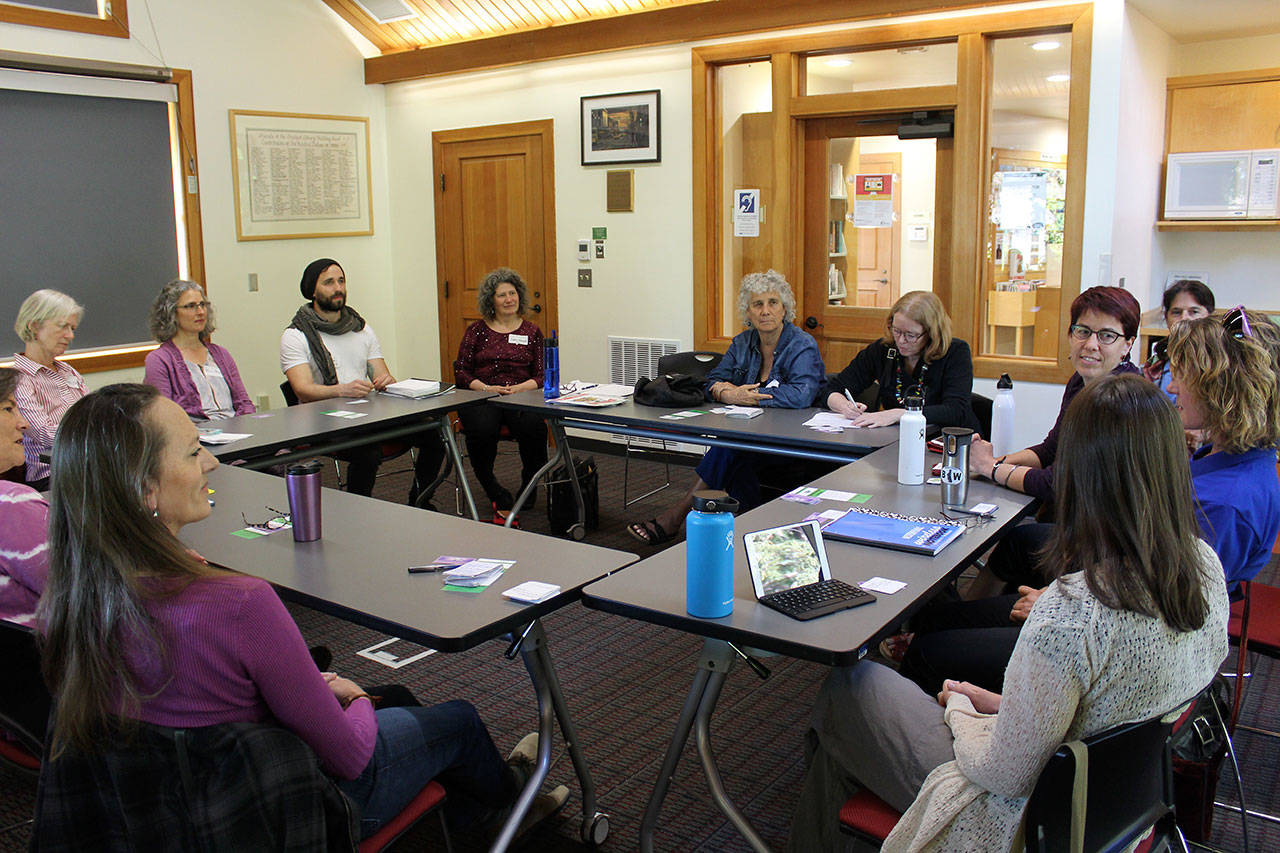Looking for alternatives to treat chronic pain in the midst of the opioid epidemic, alternative therapies, such as acupuncture, massage and mindfulness, are increasingly being viewed as effective treatments by national medical groups.
Mary Catlin with the Washington State Department of Health invited Whidbey Island’s alternative therapists and family practice physicians to a Wednesday discussion about opioid use and ways to treat chronic pain without addictive drugs.
She also hoped to address new guidelines for chronic pain treatment with primary care providers and to explore common ground between allopathic — or conventional — medical practitioners and holistic healers.
But the conversation was one-sided. About a dozen members of Whidbey Island Holistic Health Association came to the meeting at Freeland Library, but no physicians or others in mainstream medicine attended.
Catlin addressed the need to find solutions to the opioid prescription epidemic, and explained that it was fueled by the pharmaceutical industry.
“What really works for pain? It’s not opioids,” Catlin told the group. “Only 30 percent of patients’ chronic pain is relieved by opioids. But 100 percent of the people who take opioids long-term get addicted.”
Opioids, such as oxycodone, hydrocodone and codeine, have been the go-to drug prescribed by doctors for decades to relieve patients’ constant pain from arthritis, migraines, fibromyalgia, bad backs and other disorders and injuries.
They are highly addictive because they act on nerve cells in the brain, blocking pain but also causing euphoric feelings that make people want more. The drug also slows breathing, which is why overdoses are often deadly.
Catlin is a nurse consultant working with the federally funded program, Prescription Drug Overdose Prevention. Overseen by the Centers for Disease Control and Prevention, its aim is to help states find ways to reduce the numbers of opioids being prescribed and to lessen its deadly toll.
“Since the year 2000, there’s been more than 300,000 deaths from opioid overdoses,” Catlin said. “The main driver is prescription drugs for chronic pain. Clearly, it’s not working.”
CDC numbers for 2016 show more than 42,000 people died nationally and about 764 died in Washington state from opioids.
Policymakers and health officials are now struggling with how to help the estimated 100 million Americans in constant pain without relying on addictive drugs, Catlin said.
In 2012, health care providers wrote 259 million prescriptions for opioid pain medication, enough for every adult in the United States to have a bottle of pills, according to CDC data. Those addicted to the high of prescribed opioids often turn to street heroin, also an opioid.
Legislative changes on the way include a reduction in the number of days Medicare will pay for an initial prescription of opioid pain-killers, Catlin said. Other states are also restricting doctors’ prescription power of opioids.
Additionally, acupuncturists, massage therapists, movement specialists and others— not always favorably viewed by followers of conventional medicine — are now seen as allies in the search for non-drug management of pain, Catlin pointed out.
Two years ago, the CDC released guidelines on different strategies for managing chronic pain. The agency also stated it found no evidence that opioids were even effective for managing chronic pain. However, it did cite evidence that alternative strategies — such as cognitive behavioral therapy, acupuncture, medical massage, physical therapy — were useful in providing relief for chronic pain.
The Academic Consortium for Integrative Medicine and Health recently published a white paper stating some non-pharmacological options are highly effective in treating pain. Researchers reviewed evidence-based, non-drug, pain-treatment strategies and found acupuncture helped with back pain, music therapy reduced pain in burn patients and t’ai chi was effective in dealing with chronic pain and osteoarthritis.
Presenting such information to people at the meeting was akin to singing to the choir. Therapists in the room spoke of many patients who’ve found relief or support using their respective techniques, ranging from high school track athletes to disabled veterans to 97-year-old t’ai chi students.
Catlin described the two sides of medicine as “two tribes” that need to start conversing about how they can work together on behalf of their patients.
Encouraging social interactions, exercise and distraction to people in pain are beneficial activities that all providers could be suggesting to patients.
Getting health insurance plans to pay for acupuncture, massage and other therapies considered alternative or complementary is another challenge, Catlin said.
“It’s not that we don’t take insurance, it’s that insurance doesn’t take us,” Lynne Donnelly, president of the Whidbey Island Holistic Health Association, pointed out.
Only one of a dozen people at the meeting said they’d ever received a patient referral from a local doctor. Some said they’ve tried and failed to schedule meetings with local providers to explain their services.
As doctors face new laws restricting prescribing opioids, Jeremy Cornish of Whidbey Acupuncture and Herbs suggested now’s the time they may finally consider the benefits of many kinds of treatment.
“They are all worried about the new pain laws,” he told his colleagues. “Offer physicians a way out of opioids.”




